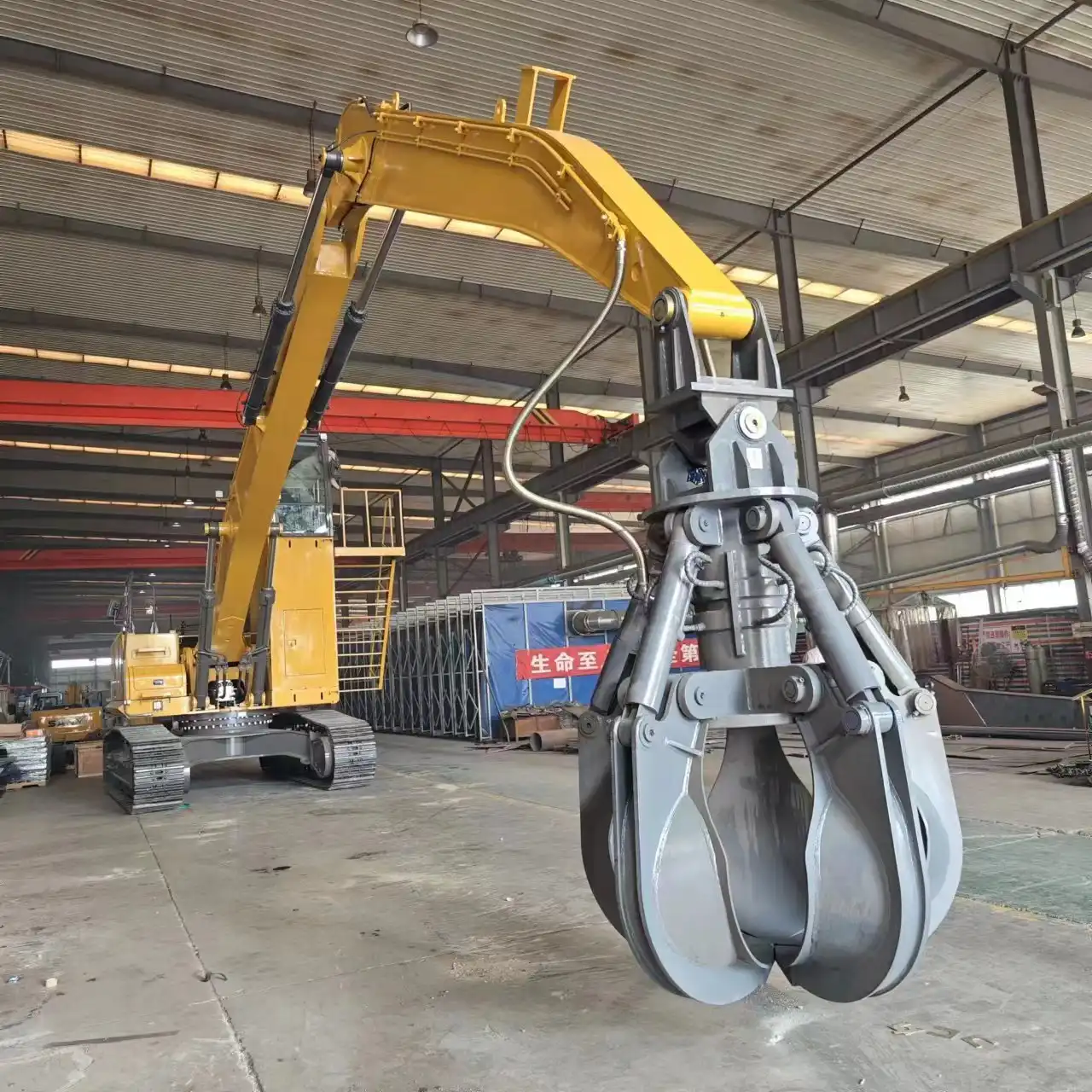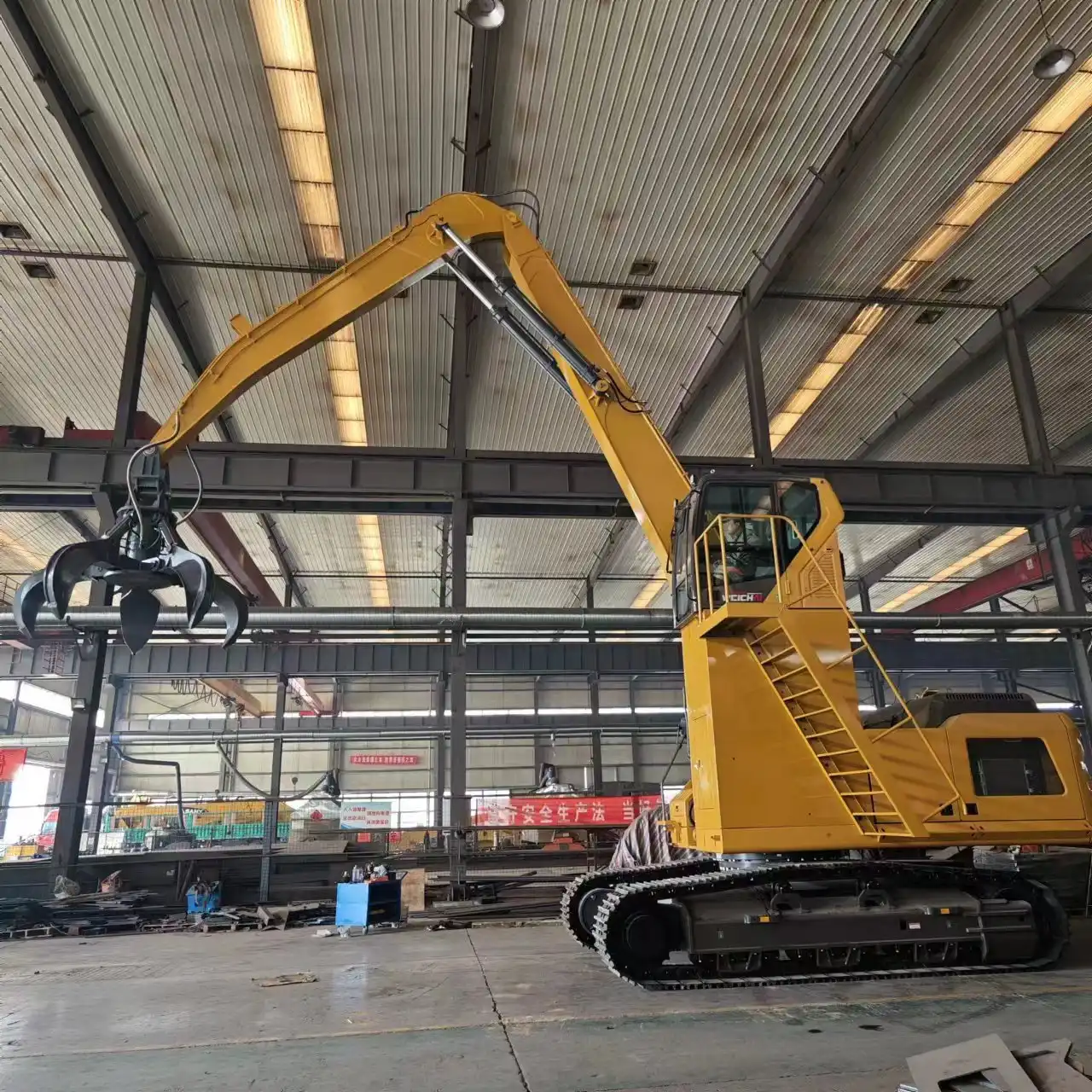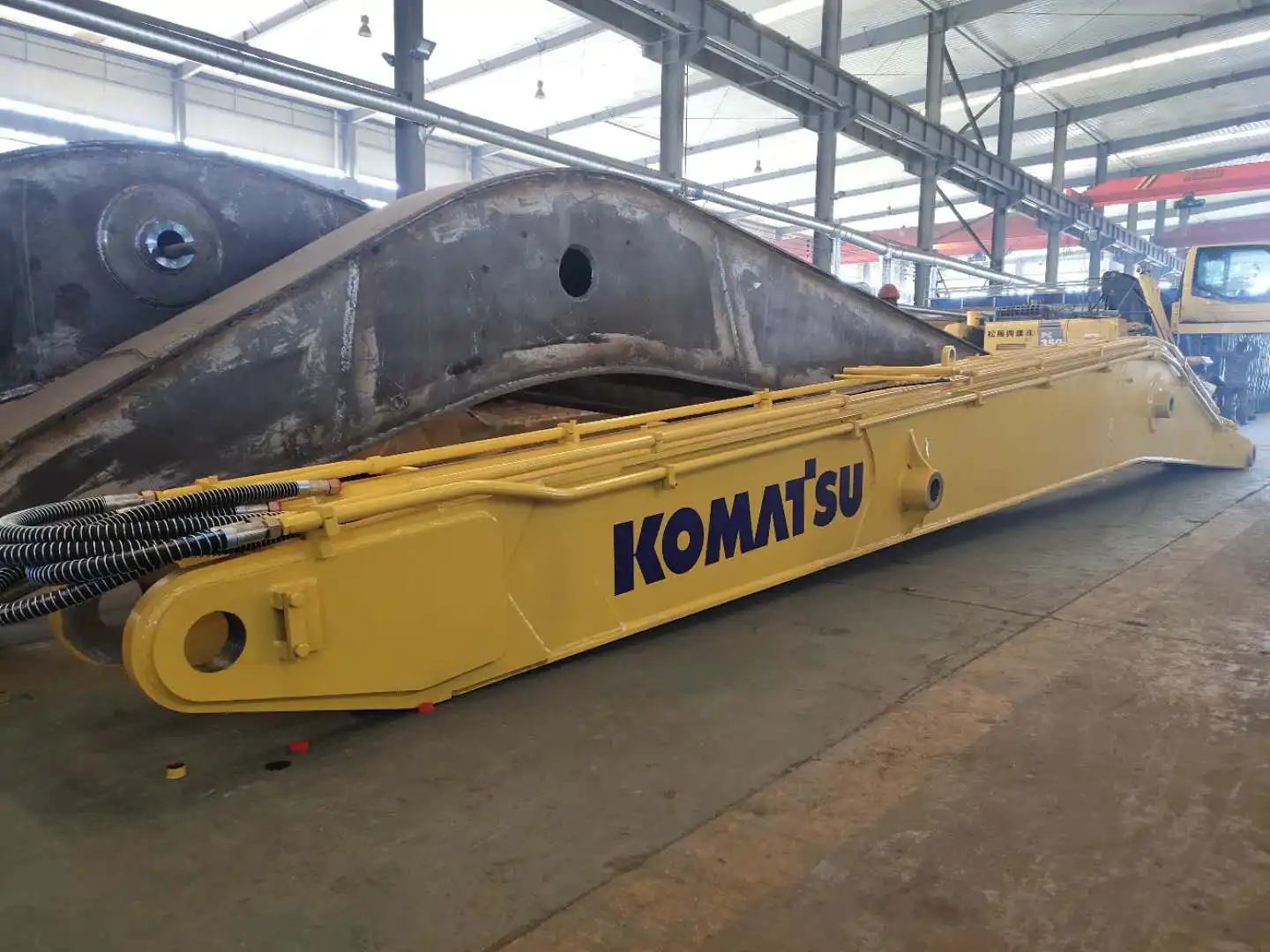What’s the difference between a grab arm and a standard bucket?
When it comes to excavator attachments, understanding the key differences between an excavator grab arm and a standard bucket is crucial for optimizing your operations. The primary distinction lies in their design and functionality, while standard buckets are designed for digging and scooping material, grab arms feature opposing claws that can grasp, lift, and manipulate objects with precision. This fundamental difference impacts everything from material handling capabilities to operational efficiency across various industries, including railway construction, waste management, and demolition work.
The grab arm excels in applications requiring precise material handling, such as sorting recyclables, handling scrap metal, or managing railway components. Their specialized design allows operators to pick up individual items with accuracy that simply isn't possible with standard buckets. Meanwhile, buckets remain the attachment of choice for bulk excavation, trenching, and loading loose materials. Selecting between these two attachments depends entirely on your specific application requirements, material characteristics, and operational goals.

Structural Design
Fundamental Construction Differences
The excavator grab arm features a distinctive design characterized by two or more opposing "fingers" or claws that can close around materials. These hydraulically-powered claws are typically manufactured using high-strength alloy plates for the arms, with cold-drawn seamless pipes enhancing structural integrity. The pivoting mechanism relies on premium 40Cr steel pin shafts and brass bushings at the arm base, ensuring smooth operation even under substantial loads.
In contrast, standard buckets employ a unibody scoop design with a single cavity bounded by cutting edges and sidewalls. This configuration facilitates the collection and containment of materials rather than grasping them. Buckets generally feature reinforced cutting edges, wear plates, and strategically placed interior reinforcements to withstand the abrasive forces encountered during digging operations.
Material Composition Variations
Material selection significantly impacts attachment performance and longevity. Grab arms require materials that can withstand not only the abrasive contact with various materials but also the repeated mechanical stress of opening and closing. This is why premium excavator grab arm components typically feature:
- Hardened steel with precise hardness ratings for the grabbing surfaces
- Specialized alloys at critical stress points
- Reinforced hydraulic components capable of delivering consistent grabbing force
- Wear-resistant bushings and bearings at pivot points
Standard buckets prioritize different material properties, focusing on abrasion resistance along the cutting edge and structural integrity throughout the bucket body. They often incorporate additional wear plates in high-impact zones and may feature teeth or specialized edges depending on the intended application.
Hydraulic System Requirements
The hydraulic demands of an excavator grab arm differ substantially from those of standard buckets. Grab arms typically require:
- Dedicated hydraulic circuits to control the gripping action
- Proportional control valves for precise operation
- Higher hydraulic pressure ratings to maintain secure grips
- Additional hydraulic lines integrated through the boom and stick
These requirements mean that excavators must have appropriate hydraulic capabilities to effectively operate grab arms, potentially including auxiliary hydraulic systems not necessary for basic bucket operation. This represents an important consideration when evaluating equipment compatibility.

Primary Functions
Material Handling Capabilities
The excavator grab arm demonstrates unparalleled versatility in material handling across various industries. Unlike standard buckets that simply scoop material, grab arms can:
- Selectively retrieve specific items from mixed materials
- Handle irregularly shaped objects with precision
- Maintain secure holds on materials during machine movement
- Sort materials in-place without additional equipment
These capabilities make grab arms particularly valuable in waste management facilities, where operators must separate different material types, and in railway maintenance operations, where specific components must be carefully manipulated. The ability to grasp materials also enables vertical lifting operations that would be challenging or impossible with standard buckets.
Industry-Specific Applications
Different industries leverage the unique properties of grab arms and buckets in distinct ways:
For railway construction and maintenance, excavator grab arm attachments excel at:
Handling and placing railway ties with precision
Removing and installing rail sections
Managing ballast and track components with minimal disruption to surrounding infrastructure
Clearing vegetation and debris from tracks without damaging underlying structures
In waste management, grab arms provide essential functionality for:
Sorting recyclable materials from general waste
Handling bulky items like appliances or furniture
Loading material into processing equipment or transport vehicles
Breaking down and compacting waste materials
For demolition contractors, both attachments serve crucial but different roles:
Grab arms manipulate and remove specific structural elements
Buckets clear and load debris after initial demolition
Specialized demolition grab arms can crush and separate materials simultaneously
Load Capacity Differences
Standard buckets and grab arms differ significantly in their approach to load management:
Standard buckets focus on volumetric capacity, typically measured in cubic meters or yards. Their design emphasizes:
Maximum material volume per cycle
Even weight distribution across the attachment
Retention of loose materials during movement
Consistent loading performance for homogeneous materials
The excavator grab arm, however, prioritizes gripping strength and object control over volume. Its capacity considerations include:
Maximum weight of individually gripped objects
Gripping force measured in tons or kilonewtons
Ability to maintain secure holds during full machine articulation
Precision placement capabilities for individual items
This fundamental difference means that productivity metrics differ between the two attachments, with buckets typically evaluated on cycle times and volume moved, while grab arms are assessed on handling precision and material sorting efficiency.

Operational Differences
Operator Technique Requirements
Mastering the excavator grab arm requires a distinct skill set compared to bucket operation. Operators must develop:
Precision control of the grabbing mechanism
Spatial awareness to position the claws accurately around target materials
Understanding of material properties to apply appropriate gripping pressure
Ability to manipulate objects through complex movement patterns
Bucket operation, while still requiring skill, focuses more on:
Optimization of dig angles for maximum fill
Management of material flow during dumping
Efficiency of movement patterns between dig and dump locations
Technique adjustments based on material density and cohesion
Many experienced operators note that grab arms demand greater finesse and spatial reasoning, while buckets require understanding of material dynamics and excavation principles.
Efficiency in Various Environments
The comparative efficiency of grab arms versus buckets varies dramatically based on the working environment:
In dock unloading scenarios, excavator grab arm attachments demonstrate superior performance when:
Handling bundled materials like timber
Unloading containerized cargo with specific placement requirements
Managing irregularly shaped items that would slip from bucket edges
Separating different material types during the unloading process
For earthmoving and general construction, standard buckets maintain advantages in:
Large-scale material removal operations
Trenching and excavation tasks
Loading homogeneous materials into trucks or stockpiles
Grading and leveling operations
Environmental factors like material consistency, space constraints, and precision requirements ultimately determine which attachment delivers optimal efficiency for specific tasks.
Maintenance Considerations
The maintenance profiles of these attachments differ significantly, with excavator grab arm systems requiring:
Regular inspection of hydraulic cylinders and seals
Lubrication of additional pivot points and moving components
Monitoring of wear patterns on gripping surfaces
Adjustment of grabbing pressure and alignment
Standard buckets typically demand:
Attention to cutting edge wear
Monitoring for structural fatigue in high-stress areas
Replacement of wear parts like teeth or side cutters
Inspection for material buildup affecting performance
Maintenance intervals and focus areas vary between these attachments, with grab arms typically requiring more frequent inspection of moving components and hydraulic systems, while buckets need greater attention to wear surfaces and structural integrity.
FAQ
①How do I know whether to choose a grab arm or standard bucket for my project?
Consider your primary material handling needs: choose an excavator grab arm for applications requiring precise material selection, handling odd-shaped objects, or sorting different materials. Select a standard bucket for bulk excavation, loading loose materials, or general earthmoving tasks.
②Can one excavator use both grab arms and standard buckets?
Yes, most modern excavators can alternate between grab arms and buckets. However, you'll need to ensure your machine has the proper hydraulic systems to power a grab arm, as these attachments typically require additional hydraulic circuits not needed for bucket operation.
③What maintenance differences should I expect between these attachments?
Grab arms require more frequent inspection of hydraulic components, pivot points, and gripping surfaces, while buckets need more attention to cutting edges and structural wear. The excavator grab arm has more moving parts and hydraulic components, potentially increasing maintenance requirements.
④Are there hybrid options that combine features of both attachments?
Yes, specialized attachments like hydraulic thumbs add grabbing capabilities to standard buckets, and certain grapple buckets incorporate elements of both designs. These hybrids offer versatility but may compromise on the specialized performance of dedicated grab arms or buckets.
⑤What industries benefit most from excavator grab arms?
Railway construction and maintenance, waste management, scrap metal handling, forestry, and demolition industries gain particular advantages from excavator grab arm attachments due to their need for precise material handling and sorting capabilities.
Contact Tiannuo
The choice between a grab arm and a standard bucket represents a critical decision that directly impacts operational efficiency across numerous industries. While buckets excel in bulk material handling and excavation tasks, grab arms provide unmatched precision for selective material handling, sorting, and specialized applications like railway maintenance.
Understanding these fundamental differences allows equipment managers and operators to select the optimal attachment for specific tasks, potentially improving productivity, reducing material waste, and enhancing overall project outcomes. For industries requiring both capabilities, investing in both attachment types often proves economically advantageous over time.
For more information about high-quality excavator grab arm options and to discuss your specific equipment needs, contact Tiannuo Machinery at raymiao@stnd-machinery.com. With years of experience manufacturing premium excavator attachments, Tiannuo provides solutions tailored to your unique operational requirements.
References
Construction Equipment Guide: Excavator Attachments Selection Manual (2023)
International Railway Construction Journal: Modern Equipment for Railway Maintenance (2024)
Journal of Waste Management Technologies: Comparative Analysis of Material Handling Equipment (2023)
Heavy Equipment Engineering: Hydraulic Systems for Specialized Attachments (2024)
Industrial Material Handling Review: Optimizing Equipment Selection for Project Efficiency (2023)
About Author: Arm
Arm is a leading expert in the field of specialized construction and railway maintenance equipment, working at Tiannuo Company.

